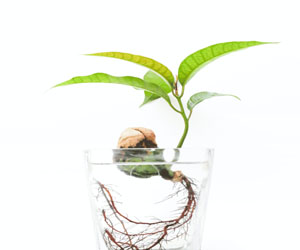


Embracing Simplicity And Sustainability
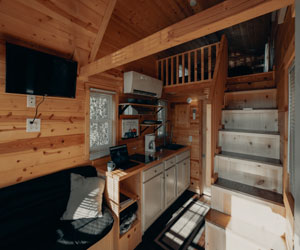
In a world where urbanization and population growth are rapidly encroaching on available space, the concept of Tiny House Living has emerged as a revolutionary approach to housing design. Tiny House Living is about embracing minimalism, maximizing space utilization, and minimizing the environmental footprint of our homes. These ingeniously designed, compact dwellings challenge conventional notions of what a home should be, offering an alternative lifestyle that prioritizes simplicity, sustainability, and freedom from the burdens of excessive material possessions.
Tiny House Living isn't just about living in small spaces; it's a philosophy that's gaining popularity worldwide. It's a choice to downsize and simplify, allowing individuals and families to lead more intentional lives. The movement is driven by a desire to reduce environmental impact, lower costs, and free up time for what truly matters.
One of the most compelling aspects of the Tiny House Lifestyle is its focus on minimalism. Living in a tiny house necessitates a careful evaluation of one's possessions. This shift towards owning fewer things allows for a clutter-free, stress-free environment. People find themselves no longer burdened by the weight of material possessions but rather liberated to explore other aspects of life.
Maximizing space utilization is at the heart of tiny house design. Every square inch is carefully considered and used efficiently. Multi-functional furniture, built-in storage, and innovative space-saving solutions are key elements of tiny house living. These homes prove that you don't need a massive space to live comfortably; you just need a well-thought-out layout and design.
Reducing the environmental footprint is another driving force behind the Tiny House Lifestyle. Tiny houses are typically built with sustainable materials and are energy-efficient. Their compact size requires fewer resources to construct and maintain. Furthermore, living small encourages individuals to consume less, reduce waste, and lead a more eco-friendly life. Some tiny houses even incorporate off-grid systems, such as solar panels and composting toilets, to further minimize their impact on the environment.
The Tiny House Lifestyle offers financial benefits as well. With lower construction costs and reduced energy bills, tiny house owners often find themselves with more disposable income. This financial freedom allows for investments in experiences rather than possessions. It's about prioritizing the moments and adventures that truly enrich our lives.
While the Tiny House Lifestyle may not be for everyone, it has a growing community of enthusiasts who support and inspire one another. Tiny house communities, both physical and online, provide a sense of belonging and shared values. They foster a culture of collaboration and sustainability, promoting the exchange of ideas and solutions.
The Tiny House Lifestyle is a fascinating alternative to conventional housing that challenges the status quo. It's about embracing minimalism, maximizing space utilization, and minimizing one's environmental footprint. The movement empowers individuals to live intentionally, simplify their lives, and reduce their impact on the planet. Tiny house living isn't just about a small house; it's about a big life filled with purpose, sustainability, and freedom. As urbanization and population growth continue to put pressure on available space, the Tiny House Lifestyle stands as an inspiring response to the question of how we can live better with less.
The Art Of Seasonal Planting
 The Importance Of Seasonal Planting
The Importance Of Seasonal Planting
Seasonal planting is more than just a tradition; it is a science and an art that has been practiced for generations. It recognizes the fact that different plants thrive in different seasons due to variations in temperature, daylight, and weather conditions. By aligning your garden with these natural rhythms, you can optimize plant growth, health, and yield.
Key Benefits Of Seasonal Planting
Optimal Growth Conditions: Seasonal planting ensures that your crops receive the right balance of sunlight, temperature, and moisture at each stage of their growth. This leads to healthier and more productive plants.
Crop Diversity: Planting seasonally allows you to diversify your garden throughout the year. Different seasons support various plant families, from cool-season greens in spring to warm-season fruits in summer.
Pest And Disease Management: Seasonal changes can disrupt the life cycles of garden pests and pathogens. By rotating your crops seasonally, you reduce the risk of infestations.
Soil Health: Seasonal planting helps maintain soil fertility by preventing the depletion of specific nutrients. Different plants have varying nutrient needs, and rotating them can help your soil recover.
Planning A Seasonal Garden
Know Your Climate: Understand your local climate, including temperature ranges, rainfall patterns, and frost dates. This information is essential for determining which plants thrive in your area during each season.
Create A Planting Calendar: Design a planting calendar that outlines what to plant and when. Consider the average date of the last spring frost and the first fall frost, as these are crucial markers for selecting plants.
The Dynamics Of Growth And Development
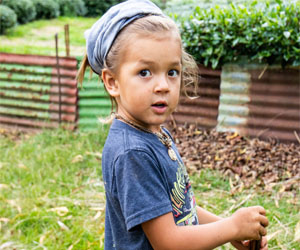 Physical Growth
Physical Growth
Physical growth is most evident during infancy and adolescence. During infancy, babies experience rapid physical growth, leading to significant weight gain and a noticeable increase in length. In adolescence, a growth spurt occurs, contributing to the dramatic changes in height and the development of secondary sexual characteristics.
Cognitive Development
Cognitive development is the process of acquiring knowledge, reasoning abilities, problem-solving skills, and language proficiency. Jean Piaget's theory of cognitive development identifies stages of development, from the sensorimotor stage in infancy to the formal operational stage in adolescence. This progression reflects the increasing complexity of thought processes and problem-solving abilities.
Emotional And Social Development
Emotional and social development is equally critical. Erik Erikson's psychosocial stages of development outline the challenges individuals face at different life stages. Emotional intelligence, the ability to recognize, understand, and manage one's own emotions, plays a vital role in social development, enabling individuals to form healthy relationships and navigate complex social situations.
Factors Influencing Growth And Development
Numerous factors influence the trajectory of growth and development, including genetics, nutrition, environmental factors, and socio-economic conditions. Genetic factors establish the baseline for an individual's growth potential, while nutrition plays a pivotal role in physical and cognitive development. Malnutrition during critical periods can lead to stunted growth and cognitive impairments.
Environmental factors, such as exposure to toxins and pollutants, can have detrimental effects on both physical and cognitive development. In contrast, enriching environments with access to education, healthcare, and social support systems foster positive growth and development.
Building Sustainable Communities For A Better Future
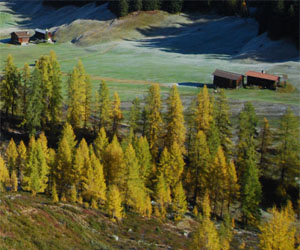
Principles Of Eco-Villages:
Sustainability: Eco-villages are built on principles of sustainability. This encompasses eco-friendly housing, renewable energy sources, and a focus on reducing waste and energy consumption. Sustainable farming and food production are also key elements, with many eco-villages aiming to be self-sufficient in terms of food.
Low Environmental Impact: These communities strive to have a minimal impact on the environment. This often means eco-friendly construction, waste reduction and recycling, sustainable water management, and the use of renewable energy sources like solar panels or wind turbines.
Community And Connection: A strong sense of community is a hallmark of eco-villages. Residents often engage in decision-making processes together and foster a culture of shared responsibility. This sense of connection promotes social well-being and harmony.
Education And Learning: Many eco-villages emphasize learning and education, particularly in the areas of sustainability and eco-conscious practices. Workshops, seminars, and communal learning opportunities are common.
Cultural And Artistic Expression: Creativity and cultural expression often flourish in these communities, with residents embracing arts, music, and cultural activities that promote a sense of belonging and fulfillment.
Benefits Of Eco-Villages:
Environmental Stewardship: Eco-villages are on the forefront of environmental stewardship. By living in a sustainable, low-impact manner, residents reduce their ecological footprints and serve as models for sustainable living for the broader community.
Sustainable Living: These communities demonstrate that it is possible to live a comfortable and fulfilling life while minimizing environmental impact. They showcase the practicality of eco-conscious technologies and practices.

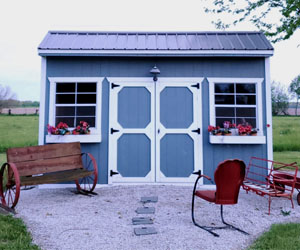



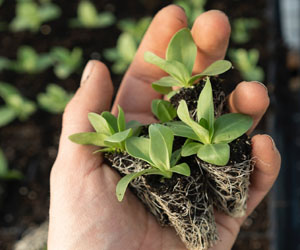
Streamline Your Space And Simplify Your Life

1. Start Small
One of the most common mistakes when tackling clutter is trying to do too much at once. Start with a small area, like a drawer, a shelf, or a single closet. Completing one small area can give you a sense of accomplishment and motivate you to continue.
2. The One-Year Rule
If you haven't used or needed an item within the last year, consider whether it's truly necessary in your life. Apply the one-year rule when decluttering. If you haven't touched it in that time, it may be time to let it go.
3. Declutter By Category
Organize your decluttering efforts by category, not by room. For example, gather all your books, clothing, or kitchen items in one place and go through them systematically. This approach allows you to see the full extent of your possessions in that category.
4. Use The Four-Box Method
When decluttering a space, use the four-box method: one box for items to keep, one for items to donate, one for items to sell, and one for items to discard. This method helps you make decisions quickly and efficiently.
5. Minimalism In Mind
Embrace a minimalist mindset by focusing on quality over quantity.
Cultivating A Sustainable Green Space
 Benefits Of Eco-Friendly Gardening:
Benefits Of Eco-Friendly Gardening:
Reduced Environmental Impact: One of the primary advantages of eco-friendly gardening is its ability to reduce the negative impact on the environment. By avoiding harmful chemical pesticides and synthetic fertilizers, you help protect the soil, water, and air from pollution.
Biodiversity: Eco-friendly gardening practices encourage the presence of diverse plant and animal species in your garden. This not only adds to the beauty of your green space but also contributes to local biodiversity and ecosystem health.
Sustainability: Sustainable gardening prioritizes renewable resources and practices, ensuring the long-term health and productivity of your garden. Composting, mulching, and water conservation are key elements of this approach.
Healthier Garden: By avoiding harsh chemicals, your garden becomes a healthier place for plants, insects, and people. Organic gardening methods promote the use of natural predators to control pests, resulting in a balanced and thriving ecosystem.
Cost-Effective: Eco-friendly gardening can be cost-effective in the long run. While initial investments in organic soil amendments and composting may be slightly higher, the reduced need for chemical inputs and lower maintenance costs can offset these expenses over time.
Principles Of Eco-Friendly Gardening:
Natural Pest Control: Encourage beneficial insects like ladybugs and lacewings, and use natural remedies like neem oil to combat garden pests.
Organic Soil Enrichment: Improve soil health with compost and organic matter, reducing the need for synthetic fertilizers.
Water Conservation: Use mulch to retain moisture, install rain barrels, and choose drought-tolerant plants to reduce water usage.
Native Plants: Incorporate native plant species into your garden, which are adapted to the local climate and require less maintenance.